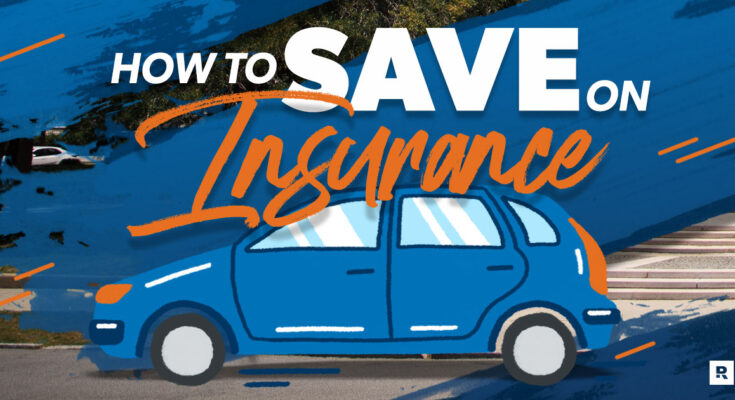How to Save Big on Your Auto Insurance Premiums Auto insurance is a necessary expense for drivers, but it doesn’t have to break the bank. With the right strategies, you can significantly reduce your premiums without sacrificing coverage. This comprehensive guide explores practical ways to save big on your auto insurance, offering actionable tips to help you keep more money in your pocket while staying protected on the road.
1. Shop Around for the Best Rates
One of the most effective ways to save on auto insurance is to compare quotes from multiple providers. Insurance companies use different formulas to calculate premiums, so rates can vary widely for the same coverage.
- How to Do It: Use online comparison tools to gather quotes from at least three to five insurers. Provide accurate information about your driving history, vehicle, and coverage needs to ensure the quotes are reliable.
- Why It Works: A 2023 study by the Insurance Information Institute found that drivers who compared quotes saved an average of 15-20% on their premiums.
- Pro Tip: Check with smaller, regional insurers in addition to big-name companies, as they may offer competitive rates tailored to your area.
2. Bundle Your Policies
Many insurance companies offer discounts when you bundle multiple policies, such as auto and home or renters insurance, with the same provider.
- How to Do It: Contact your current insurer to inquire about bundling discounts or get quotes for combined policies when shopping around.
- Why It Works: Bundling can save you 10-25% on your auto insurance premiums, depending on the provider. It also simplifies your billing and policy management.
- Pro Tip: Ensure the bundled package still meets your coverage needs and isn’t just a way to lock you into a less competitive rate for one of the policies.
3. Increase Your Deductible
Raising your deductible—the amount you pay out of pocket before insurance kicks in—can lower your monthly premiums.
- How to Do It: Review your budget to determine how much you can afford to pay in the event of a claim. Common deductibles range from $500 to $2,000.
- Why It Works: Opting for a $1,000 deductible instead of a $500 one can reduce your premium by up to 15%, according to industry data.
- Pro Tip: Set aside the deductible amount in an emergency fund to ensure you’re prepared for unexpected repairs or claims.
4. Take Advantage of Discounts
Insurance companies offer a variety of discounts that can significantly reduce your premiums. These vary by provider, so ask about all available options.

- Common Discounts:
- Safe Driver Discount: For drivers with no accidents or tickets in the past three to five years.
- Good Student Discount: For students maintaining a B average or better, typically saving 10-15%.
- Low Mileage Discount: For drivers who travel fewer than 7,500-10,000 miles annually.
- Defensive Driving Course Discount: For completing an approved course, often saving 5-10%.
- Anti-Theft Device Discount: For vehicles equipped with alarms or tracking systems.
- How to Do It: Contact your insurer to verify eligibility and provide any required documentation, such as a driving record or course completion certificate.
- Pro Tip: Some discounts, like those for paying your premium in full or enrolling in paperless billing, are easy to qualify for and can add up quickly.
5. Maintain a Good Credit Score
In most states, insurance companies use credit-based insurance scores to determine premiums. A higher score can lead to lower rates.
- How to Do It: Pay bills on time, keep credit card balances low, and regularly check your credit report for errors.
- Why It Works: Drivers with excellent credit scores can pay up to 20-30% less than those with poor credit, according to a 2024 report by the National Association of Insurance Commissioners.
- Pro Tip: If you live in a state where credit scores aren’t used for insurance (e.g., California, Hawaii, or Massachusetts), focus on other factors like driving history to secure lower rates.
6. Drive a Low-Risk Vehicle
The type of car you drive significantly impacts your insurance costs. Vehicles with high safety ratings, lower repair costs, and less appeal to thieves typically have cheaper premiums.
- How to Do It: Before purchasing a car, research its insurance costs using tools like the Insurance Institute for Highway Safety (IIHS) ratings or by getting quotes from insurers.
- Why It Works: For example, a compact SUV with top safety features may cost 20% less to insure than a sports car with similar coverage.
- Pro Tip: If you already own a high-risk vehicle, consider switching to a more insurance-friendly model when it’s time to upgrade.
7. Reduce Coverage on Older Vehicles
If you drive an older car with low market value, carrying comprehensive and collision coverage may not be cost-effective.
- How to Do It: Check your car’s value using tools like Kelley Blue Book. If the annual cost of comprehensive and collision coverage exceeds 10% of the car’s value, consider dropping these optional coverages.
- Why It Works: This can save hundreds of dollars annually, especially for vehicles worth less than $4,000.
- Pro Tip: Maintain liability coverage to meet state requirements and protect yourself financially in at-fault accidents.
8. Pay Your Premium in Full
Many insurers charge a small fee for monthly payment plans. Paying your premium in full upfront can eliminate these fees and sometimes qualify you for a discount.
- How to Do It: If your budget allows, opt for an annual or semi-annual payment plan when renewing your policy.
- Why It Works: You could save 5-10% on your premium, plus avoid monthly processing fees of $5-$10.
- Pro Tip: If paying in full isn’t feasible, ask about low-cost payment plans or automatic withdrawals to minimize fees.
9. Enroll in a Usage-Based Insurance Program
Usage-based insurance (UBI) programs, also known as telematics, track your driving habits—such as speed, braking, and mileage—through a mobile app or device installed in your car.
- How to Do It: Ask your insurer if they offer a UBI program, such as Progressive’s Snapshot or Allstate’s Drivewise, and sign up to monitor your driving.
- Why It Works: Safe drivers can save up to 30% on their premiums, though risky driving could increase rates in some programs.
- Pro Tip: Review the program’s privacy policy to understand how your data will be used and whether it’s shared with third parties.
10. Review Your Coverage Annually
Your insurance needs change over time, so reviewing your policy annually can help you avoid overpaying for unnecessary coverage.
- How to Do It: Before your policy renews, assess your driving habits, vehicle value, and financial situation. Contact your insurer to adjust coverage or explore new discounts.
- Why It Works: Life changes—like moving to a safer neighborhood, reducing your commute, or paying off a car loan—can lower your premiums.
- Pro Tip: Use this opportunity to shop around again, as competitors may offer better rates for your updated circumstances.
11. Avoid Small Claims
Filing claims for minor damages can lead to premium increases at renewal time, as insurers may view you as a higher-risk driver.
- How to Do It: Pay for small repairs out of pocket if the cost is close to or less than your deductible. Reserve claims for significant losses.
- Why It Works: Maintaining a claim-free record can keep your rates stable and may qualify you for safe driver discounts.
- Pro Tip: If you’re unsure whether to file a claim, ask your insurer how it might affect your premium before proceeding.
12. Consider Group Insurance Plans
Some organizations, such as employers, alumni associations, or professional groups, partner with insurers to offer group auto insurance plans at discounted rates.
- How to Do It: Check with your employer’s HR department, alumni network, or professional associations to see if they offer group insurance options.
- Why It Works: Group plans can provide savings of 5-15% compared to individual policies.
- Pro Tip: Compare the group plan’s coverage and rates with other quotes to ensure it’s the best deal.
Conclusion
Saving big on your auto insurance premiums is achievable with a combination of smart shopping, strategic adjustments, and proactive habits. By comparing quotes, leveraging discounts, and tailoring your coverage to your needs, you can reduce costs while maintaining adequate protection. Start implementing these tips today, and review your policy regularly to ensure you’re always getting the best value. With a little effort, you’ll be on your way to keeping more money in your wallet without compromising your peace of mind on the road.



